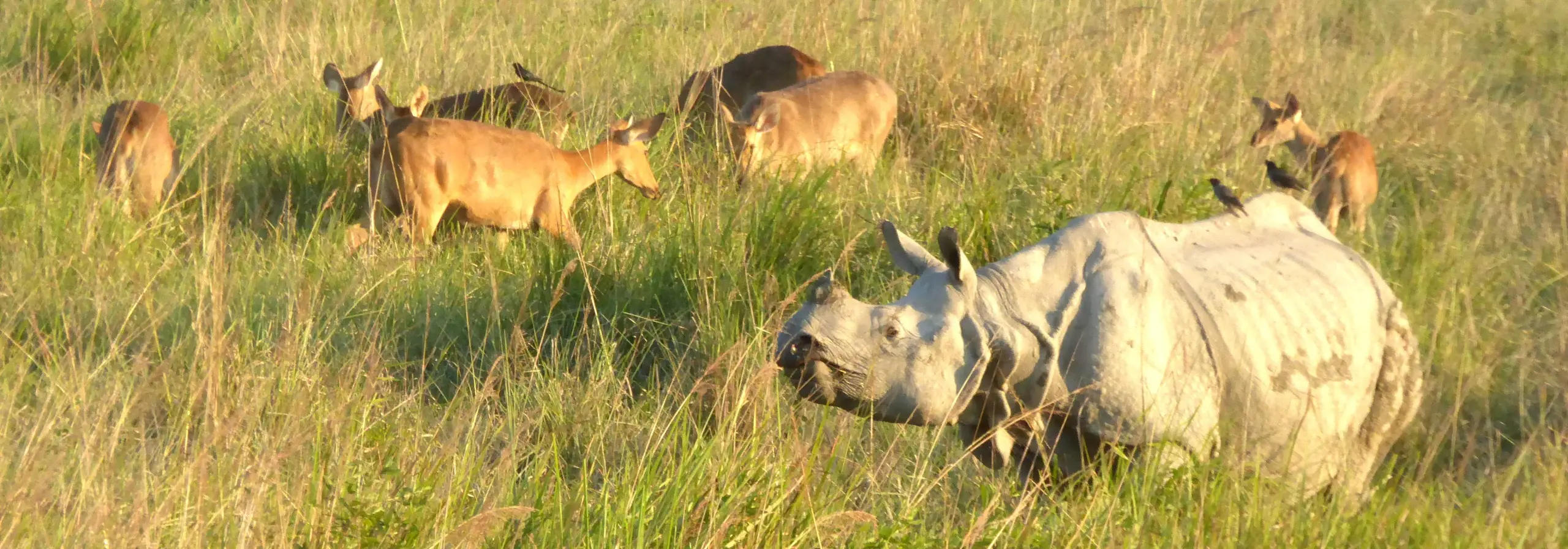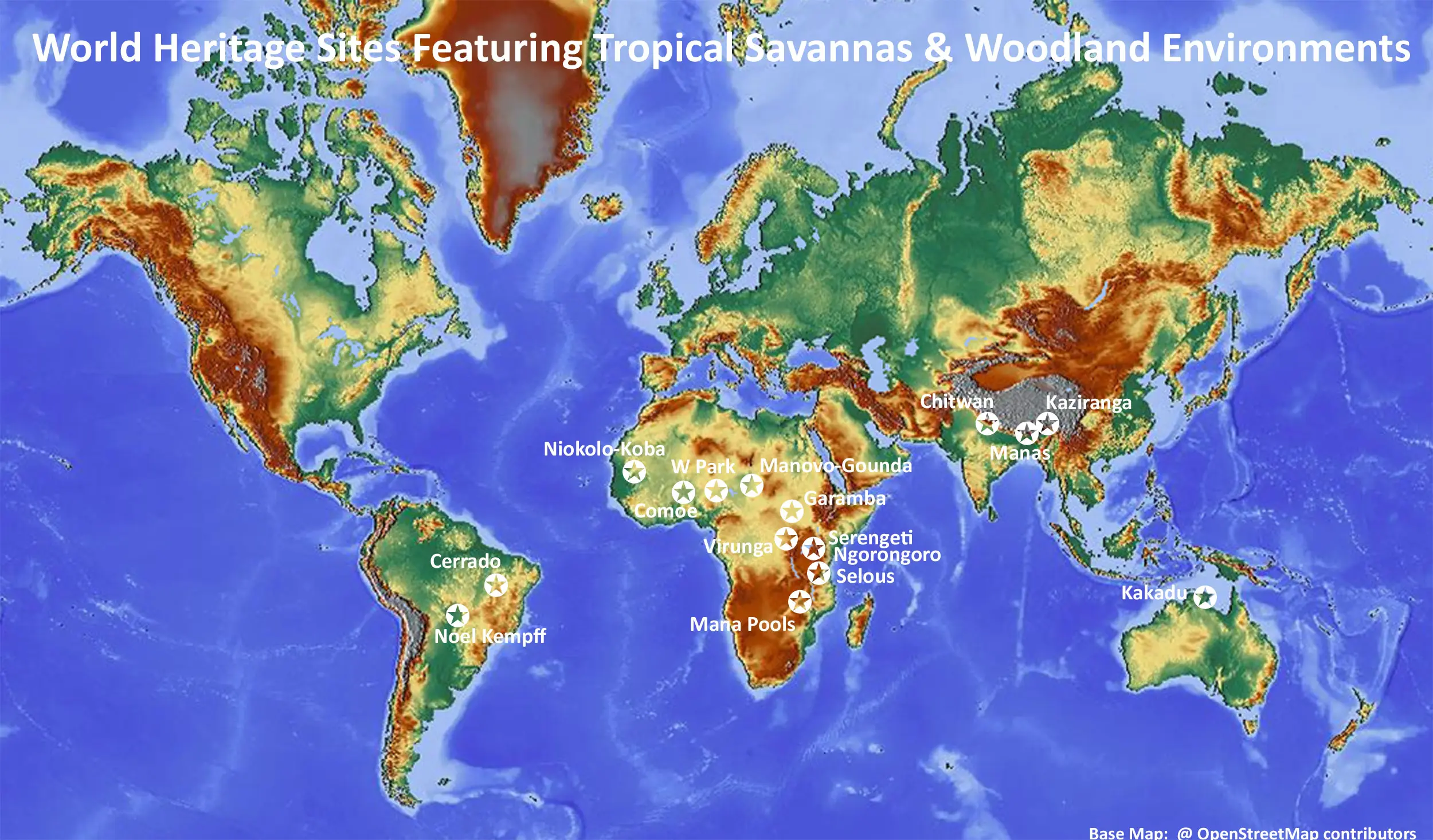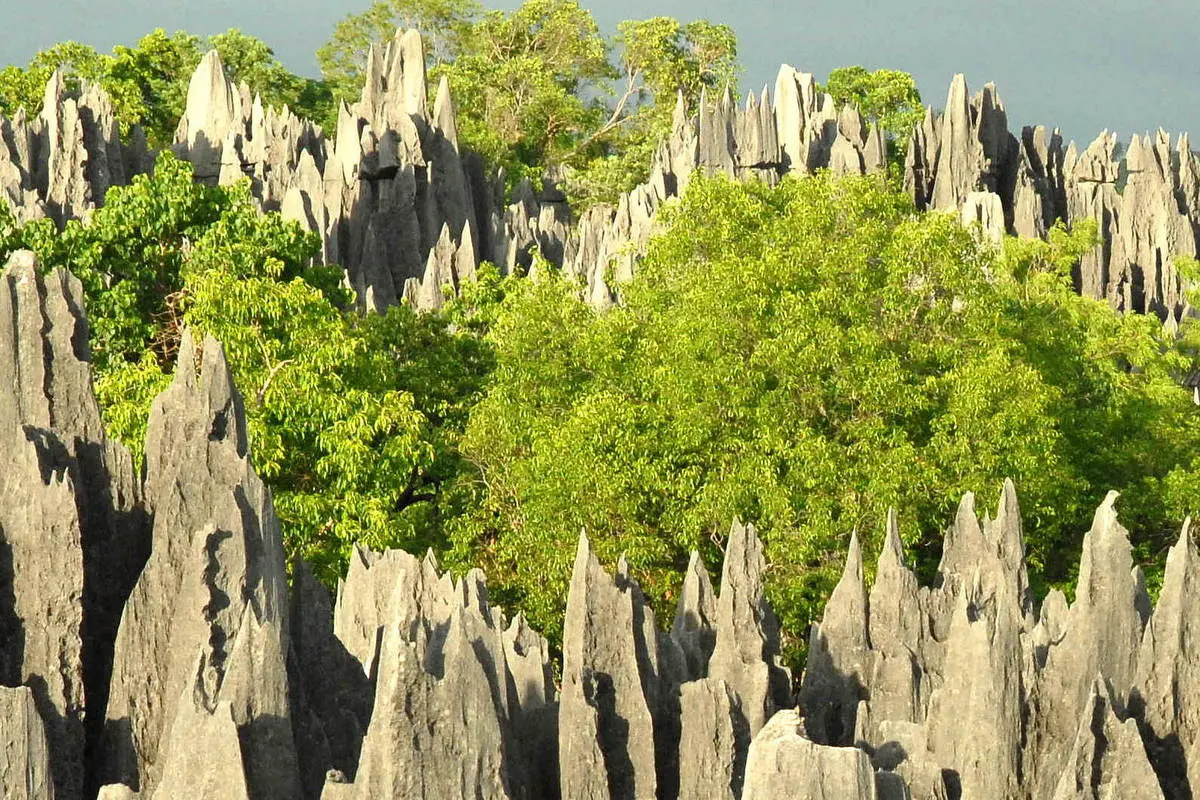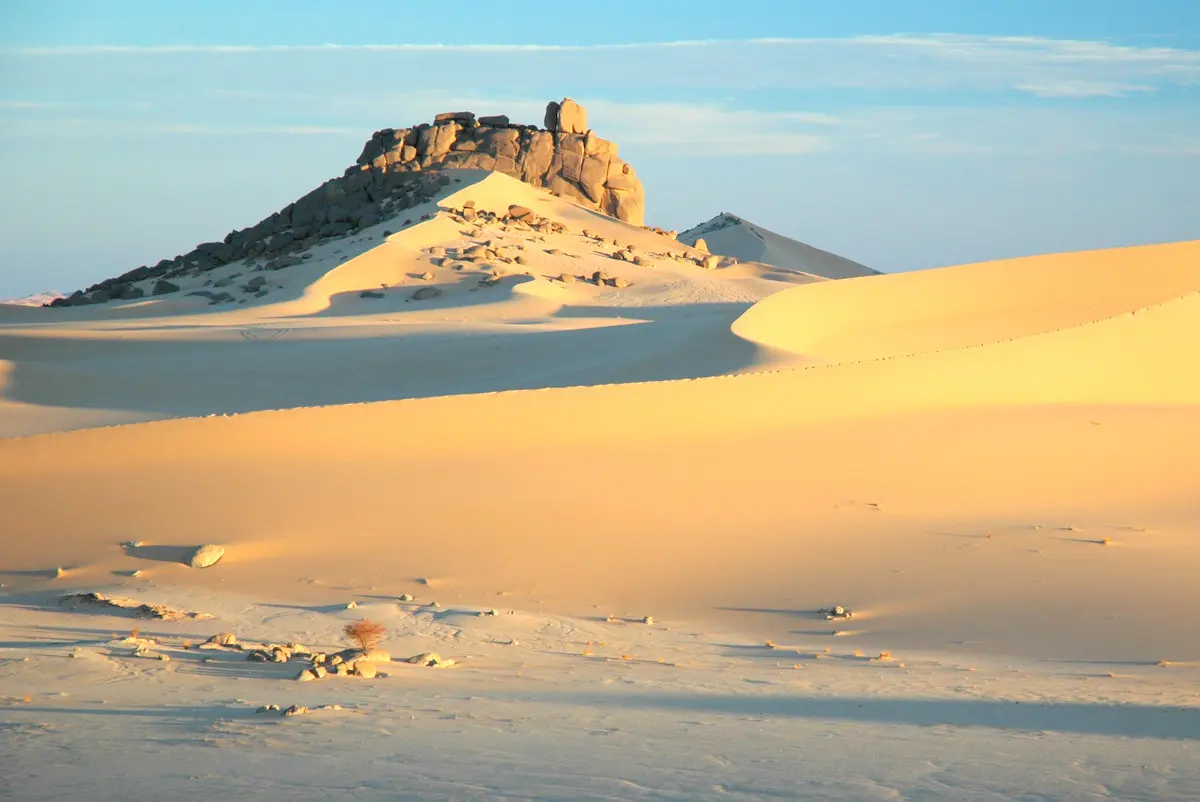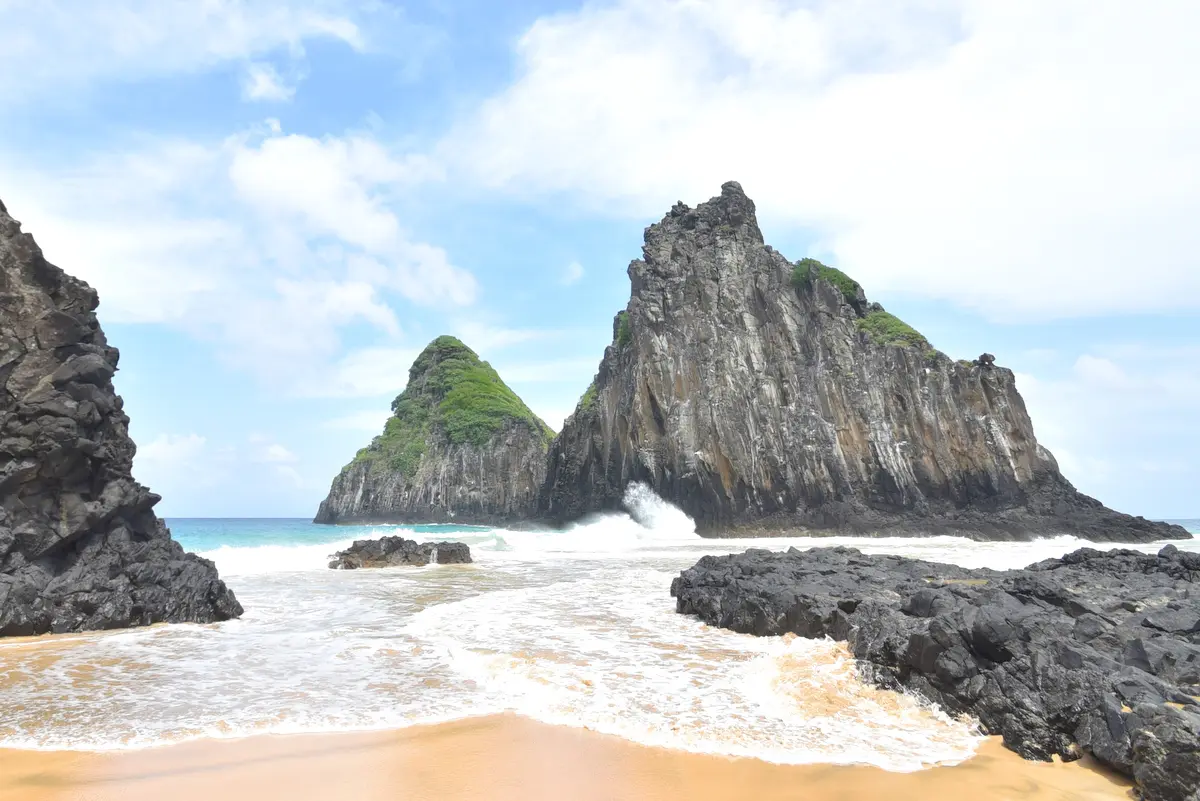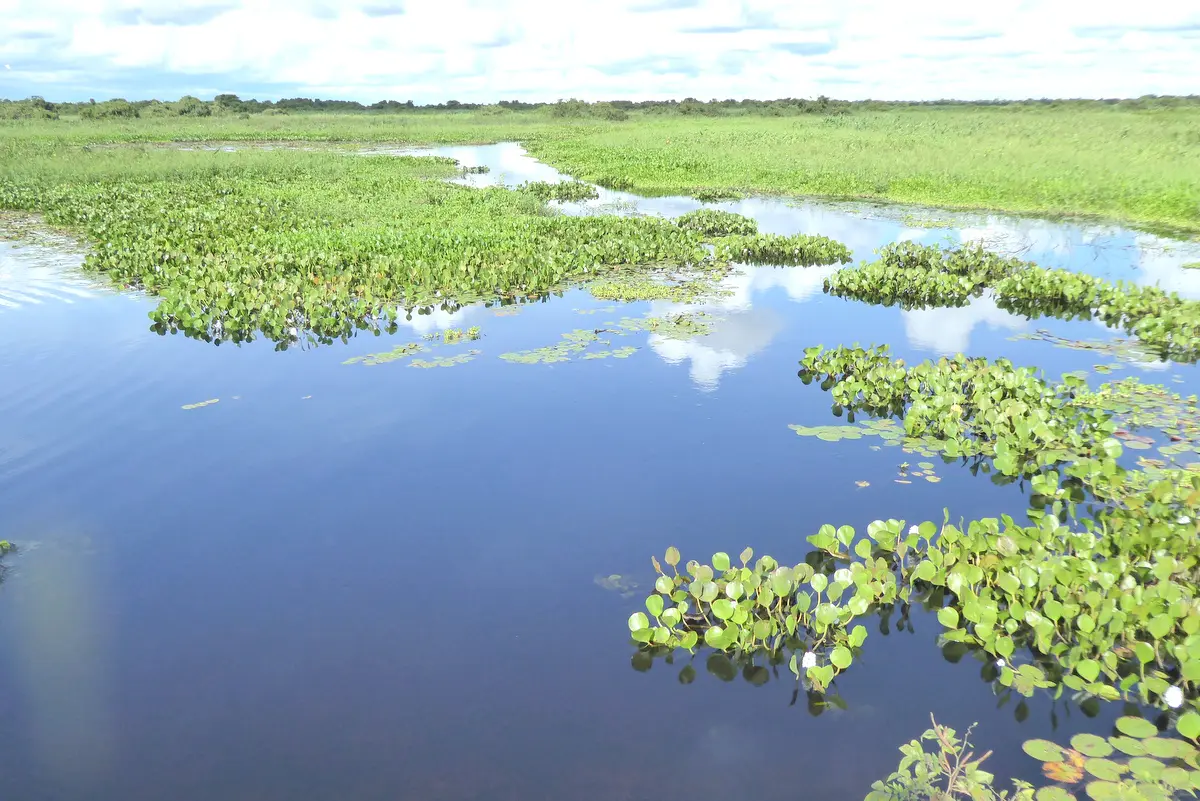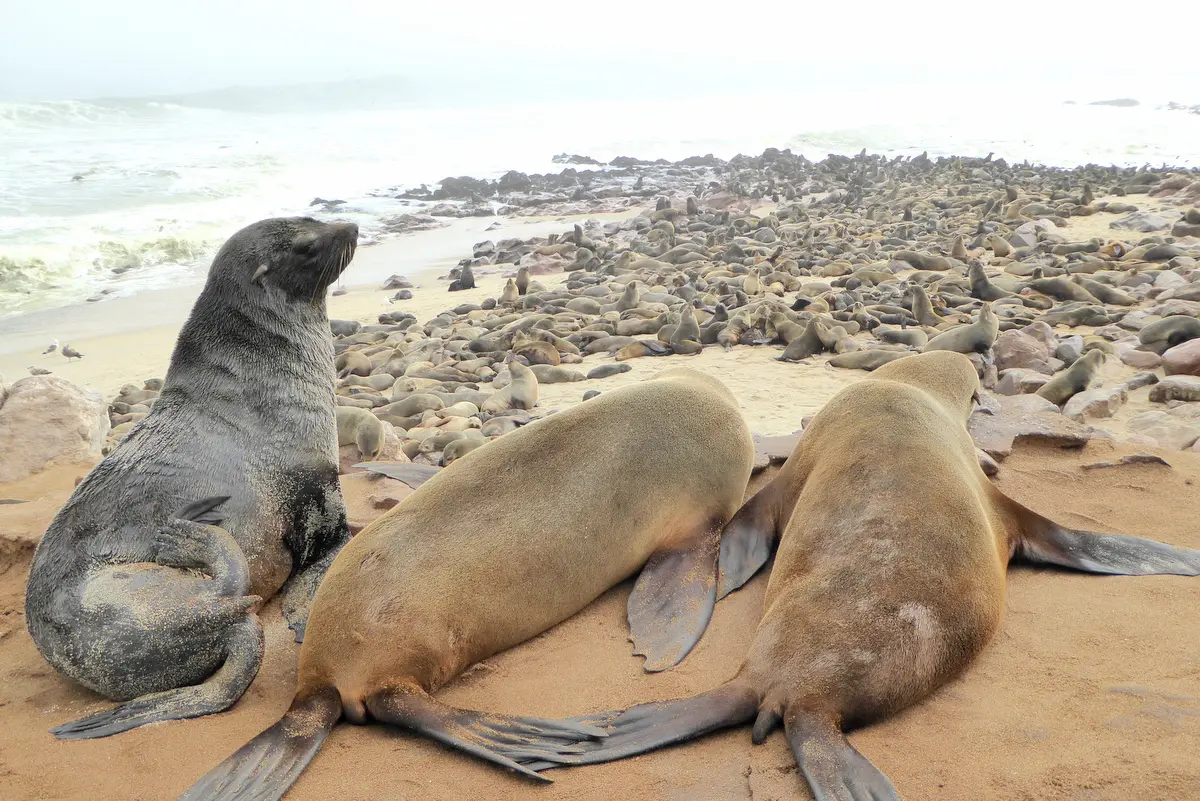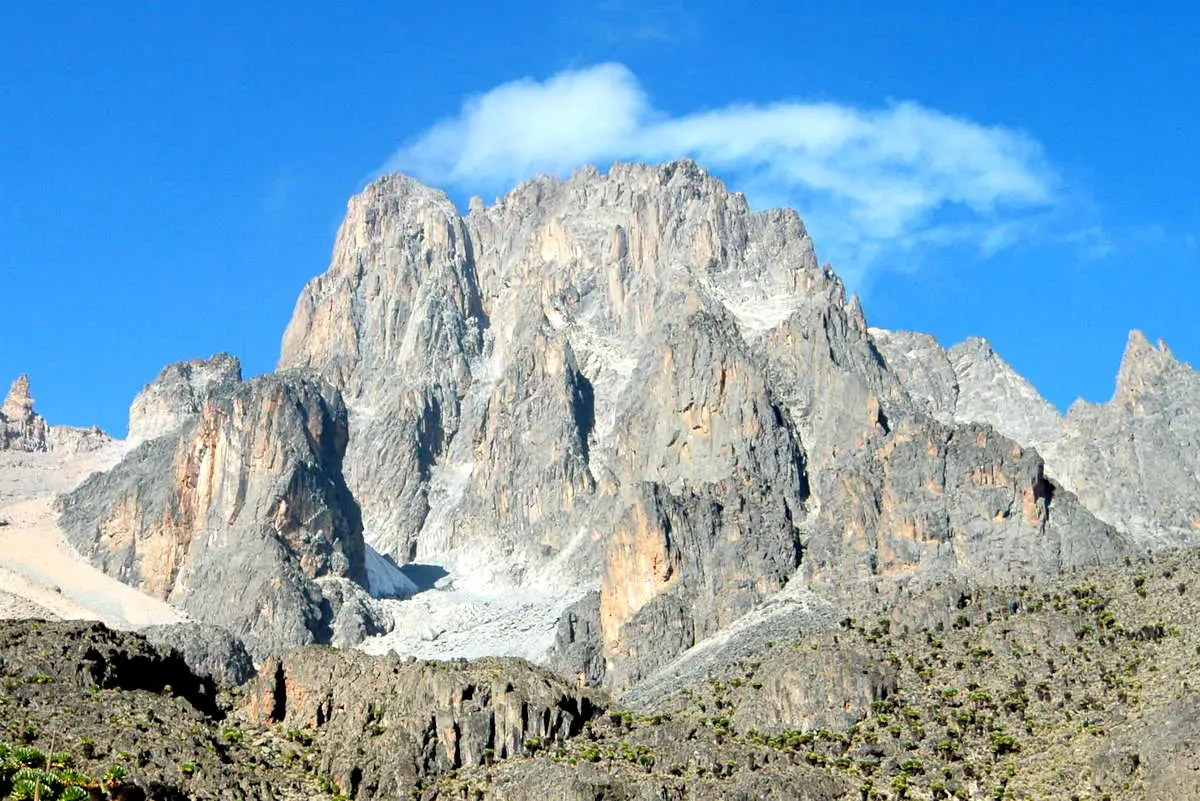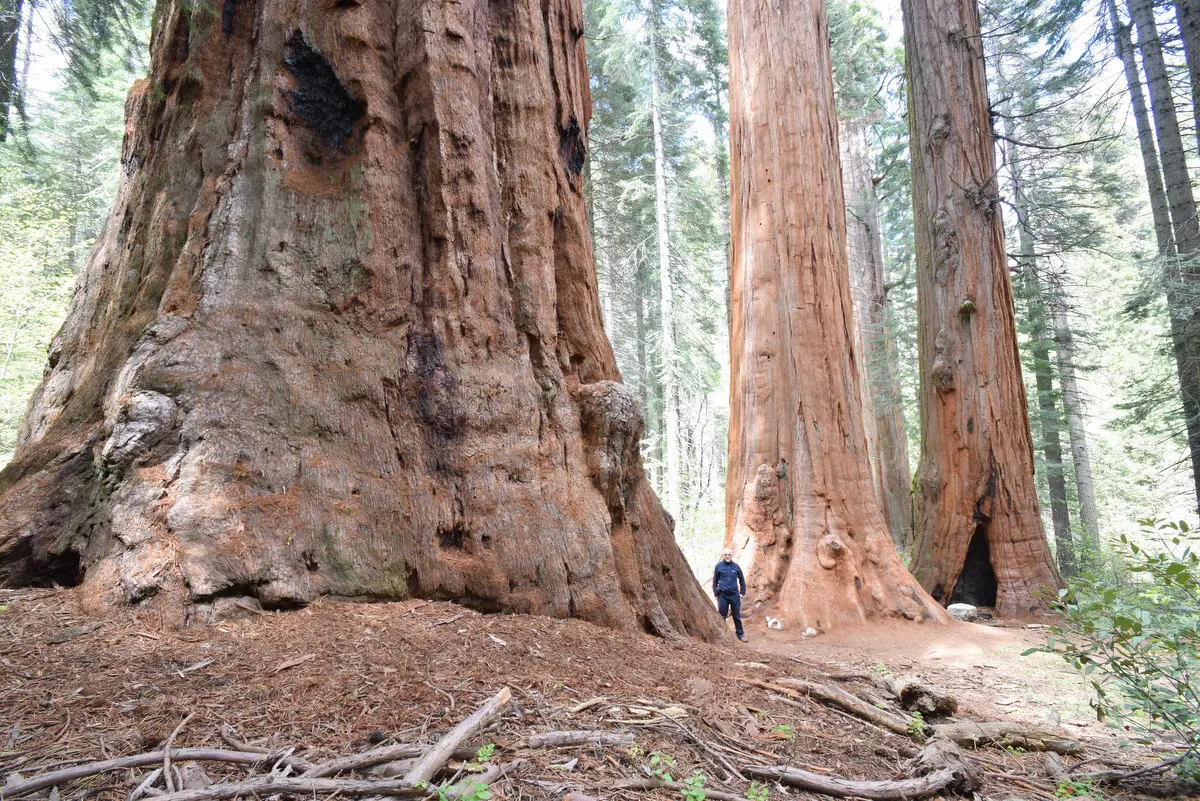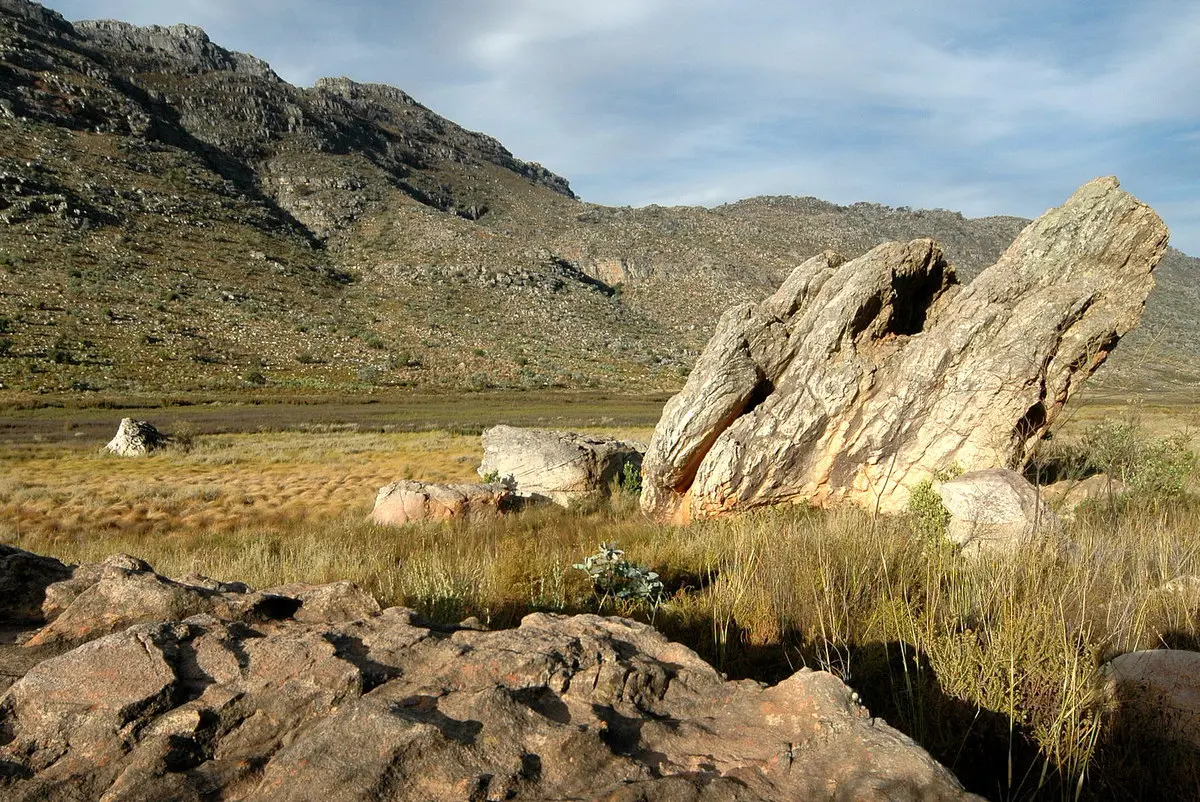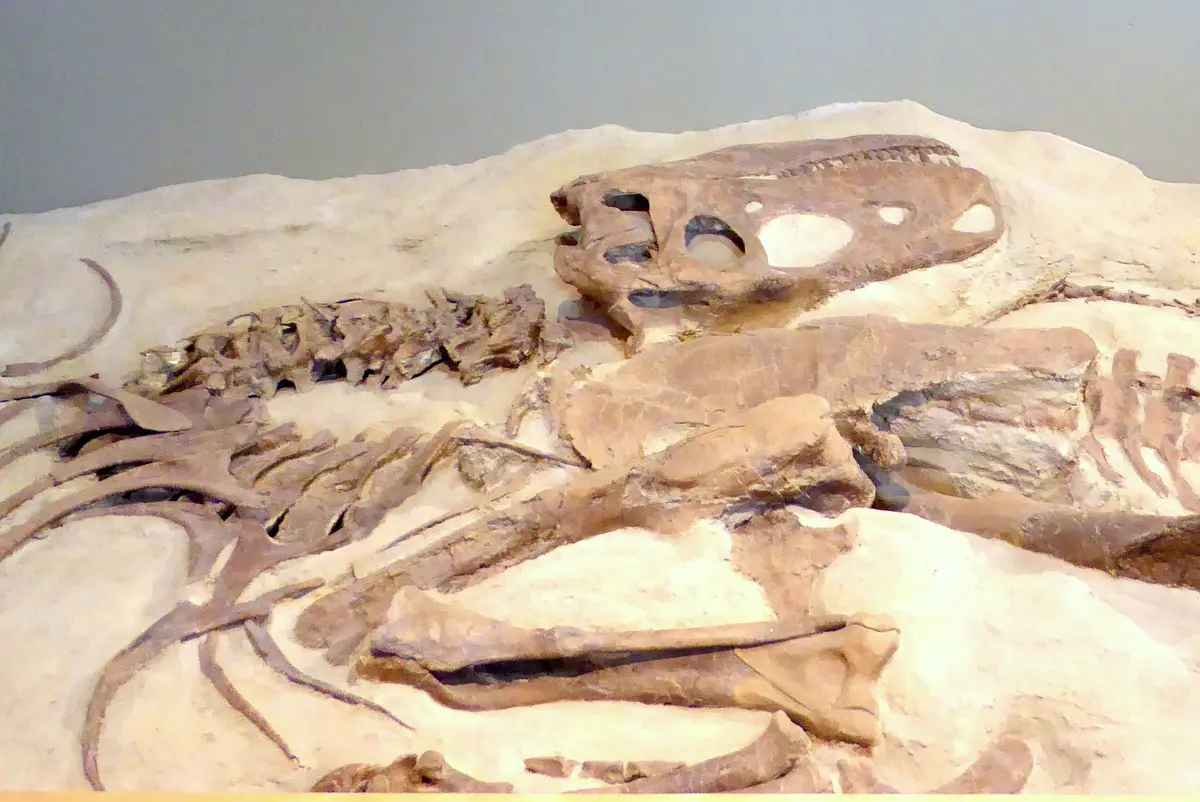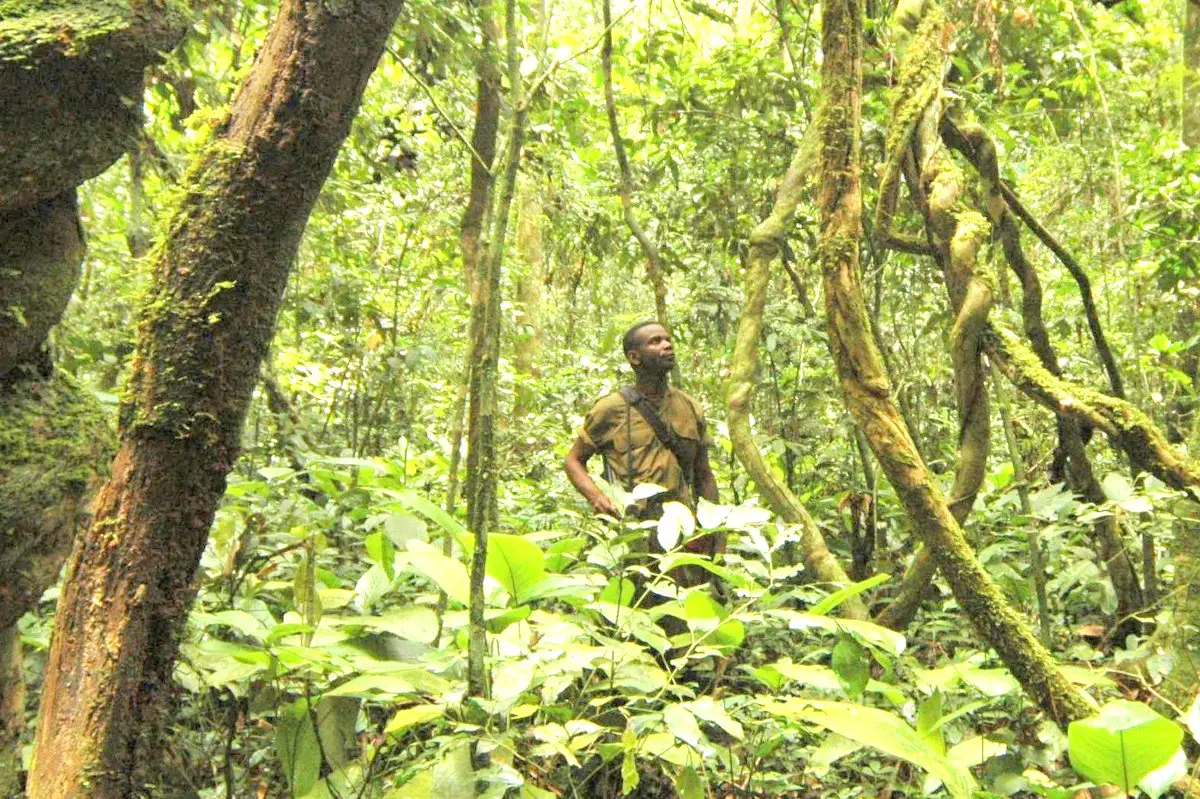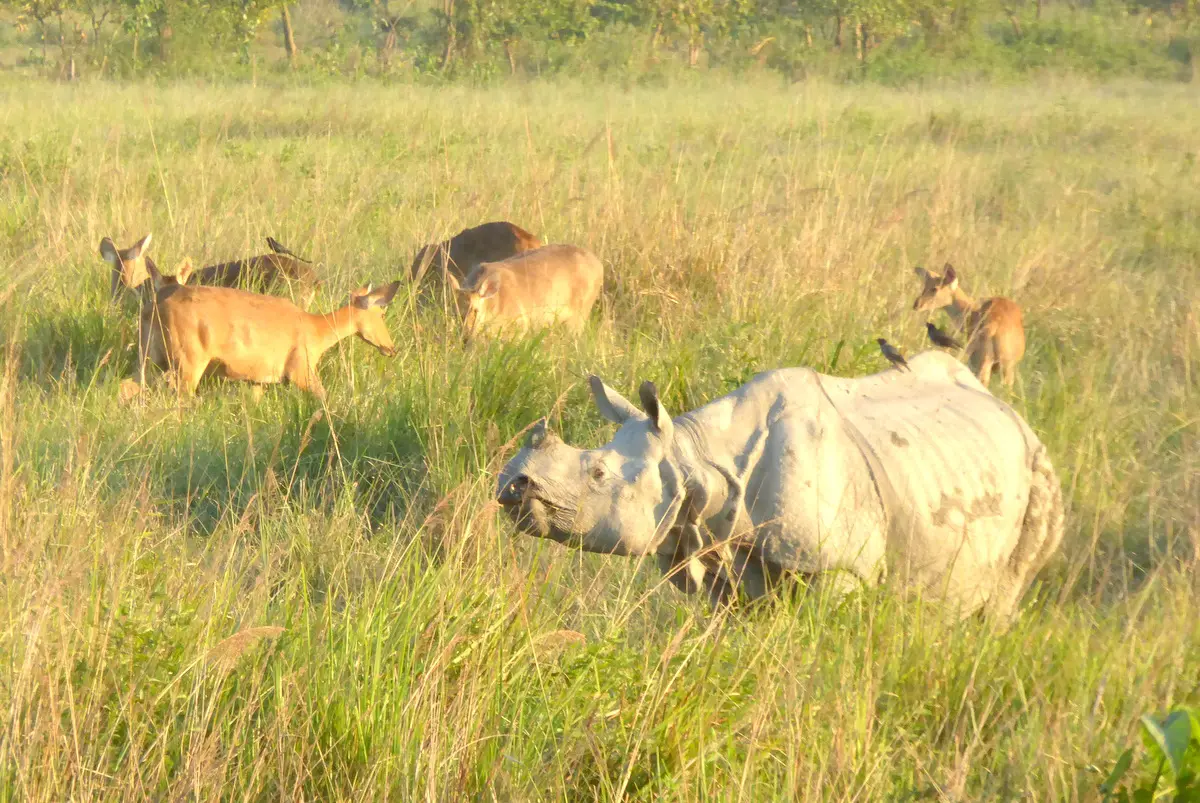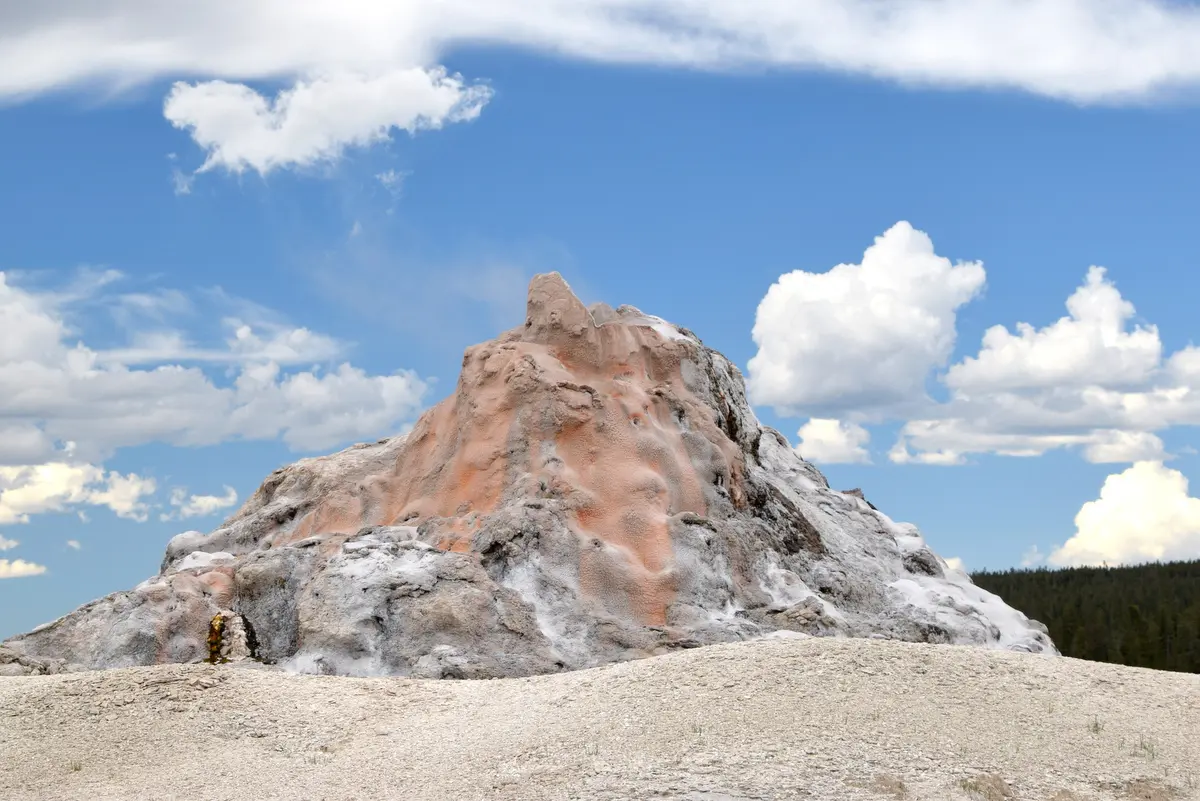Deciduous woodlands and savannas are found across the tropical and sub-tropical parts of the world in areas where the climate is too seasonal and dry to support evergreen forest. They lie in two broad belts to the north and south of the equatorial rainforests in the Americas, Africa, Asia and Australasia. In most parts of the world tropical and sub-tropical savannas and woodlands have been progressively cleared and converted to agriculture, but in Africa woodlands are infested with tse-tse flies which transmit the deadly nagana disease to cattle, and sleeping sickness to man. As a result, large areas of Africa’s woodlands have been protected against human occupation and influence, remaining as the continent’s great untouched wilderness areas. These are the heartlands of Africa’s wildlife where great herds of elephants and buffaloes, sable and roan antelope and the occasional rhino roam free. Woodlands cover about 25% of the African continent and represent the most widespread vegetation type in tropical Africa.
Although most of the world heritage sites in the tropical and sub-tropical savannaa and woodland category are in Africa, other tropical regions are all represented by at least one site. In Africa the ‘northern’ (so-called ‘Sudanian’) belt of woodlands has five sites (from west to east: Niokolo-Koba, Comoe, W-Arly-Pendjari Complex, Manovo-Gounda St Floris, and Garamba), while the southern (Zambezian) belt has only two sites (Selous and Mana Pools). In addition the drier eastern side of the continent has three of the most valuable tropical savanna sites in Serengeti, Ngorongoro and Virunga. Elsewhere, the tropical woodlands of the Americas are represented by Brazil’s ‘Cerrado’ site and the Noel Kempf Mercado park (just across the border in Bolivia), while three sub-tropical savanna woodlands are located along the foothills of the Himalayas in south Asia (Nepal’s Chitwan, and India’s Manas and Kaziranga), and Kakadu provides an outstanding example of Australasian tropical savanna woodlands.
‘To learn more about these spectacular tropical savanna and woodland places click on the links of featured sites in the table, or the photo tiles below. Note that some site pages are still under development so the links for these places are not yet active.’
Threats and conservation needs: Most tropical woodland sites in Africa and Asia are highly threatened by poaching of elephants and rhinos. In Asia massive investment in anti-poaching efforts has been largely successful in controlling this menace, but African sites are still losing their ‘megafauna’ at an alarming rate. Six of the African sites are included on the official List of World Heritage In Danger due to the loss of elephants and rhinos, a problem that has been exacerbated by periods of civil unrest in some countries.
Iconic Species: The tropical savannas and woodlands typically evoke images of wild Africa – massive herds of wildebeest and zebras crossing the open grass plains of Serengeti while buffalo and elephants thunder through the trees in clouds of dust. Meanwhile, the scenes in South Asia are superficially quite similar, and visitors have the opportunity to approach rhinos and other wildlife quite closely, riding on the backs of domesticated elephants. The woodlands of South America are altogether quite different, lacking the mammalian megafauna, but supporting spectacular diversity of species, many of which are very colourful – macaws, toucans and Morpho butterflies being especially noteworthy.
Sites by country
| COUNTRY | SITE |
| Australia | Kakadu National Park (M) |
| Bolivia | Noel Kempff Mercado National Park |
| Brazil | Cerrado Protected Areas: Chapada dos Veadeiros and Emas National Parks |
| Central African Republic | Manovo-Gounda St Floris National Park |
| Côte d’Ivoire | Comoé National Park |
| DR Congo | Virunga National Park |
| DRCongo | Garamba National Park |
| India | Kaziranga National Park |
| India | Manas Wildlife Sanctuary |
| Mexico | Tehuacán-Cuicatlán Valley: originary habitat of Mesoamerica |
| Nepal | Chitwan National Park |
| Niger | W National Park of Niger |
| Senegal | Niokolo-Koba National Park |
| Tanzania | Selous Game Reserve |
| Tanzania | Serengeti National Park |
| Tanzania | Ngorongoro Conservation Area (M) |
| Zimbabwe | Mana Pools National Park, Sapi and Chewore Safari Areas |

